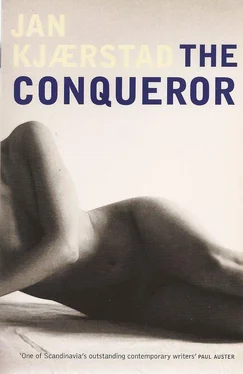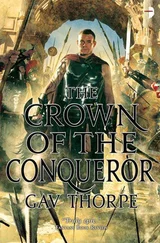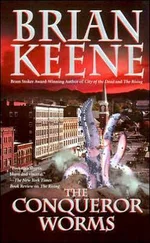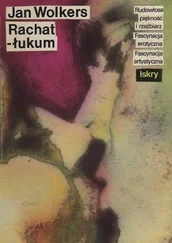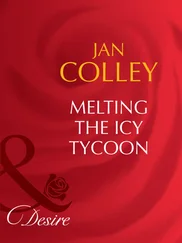Jonas had himself taken a couple of tentative steps into the labyrinth of philately. For a while he had zealously cut up envelopes, filled the bath with water and scattered the corners with the stamps into it, so that the bath looked like a huge pot full of steeped slivers of flat bread, like the dish they ate on Christmas Eve before going to church, ‘mush’ they called it — and that was what this was, a mush. Jonas soon came to the conclusion that such a muddle was more trouble than it was worth: an ocean of stamps and only a bath to put them in. Besides which, there seemed to be no way of getting to grips with such a multiplicity of stamps, not to mention all the duplication: what does one do with two hundred stamps bearing the king’s head; or shoeboxes full of 35-øre stamps depicting whooper swans, all commemorating Nordic Day?
Eagle had understood something that Jonas had not: you had to set limits for yourself. As he leafed through the album Jonas realized that Eagle had discerned a pattern in the chaos, for here the first sheets were covered with stamps depicting the Norwegian landscape, then came stamps featuring flowers, birds and animals, after which Jonas could run his eye over the history of Norway: from miniature images of rock carvings and ancient gods to tiny illustrations of Viking ships and stave churches which, in turn, were followed by stamps dedicated to kings, celebrities, buildings, all meticulously arranged in chronological order right up to the Second World War — a splendid geography-cum-history book, an alternative social history told through stamps. A bit like a comic strip, Jonas thought.
But it was a separate collection at the back of the album that came as the greatest surprise. Jonas stared and stared, but he couldn’t figure it out. ‘A collection of Norvegiana,’ Ørn said. It sounded alien and mysterious, as if he were talking about a dreamland.
‘What’s this?’
‘Stamps from other countries featuring images with some sort of Norwegian connection.’
It had never occurred to Jonas that people in foreign countries might have any interest in Norway. He examined the stamps more closely and found Sigrid Undset on a Turkish stamp issued in 1935. On another page he spied Roald Amundsen’s profile on a stamp from Hungary issued in 1948. And there, on a Cuban stamp, a picture of Armauer Hansen. Henrik Ibsen graced stamps from Bulgaria and Rumania, and Grieg was portrayed on one from the Soviet Union. The most baffling subject of all, though, was Egil Danielsen, honoured for his gold-medal win in the javelin event at the Melbourne Olympics — on a stamp from the Dominican Republic! Who would believe it! What did the peasants in the Dominican Republic think when they stuck this on their letters: Egil Danielsen captured at the very moment that the javelin left his hand? Jonas was dumbstruck. These stamps, all this foreign interest, left him quite bemused; trains of thought wove in and out of one another inside his head. I need hardly stress, Professor, that this was a decisive moment in Jonas Wergeland’s life.
Ørn began to tell him about the postal system and the stamps, about how amazing it all was. This worldwide network. Proof of the possibility of peaceful coexistence. Ørn was all lit up, Jonas hardly recognized his friend. Ørn stumbled over his words, sounding old beyond his years as he breathlessly explained: ‘You see, stamps reflect the soul of a country.’
‘Great,’ Jonas said, slamming the album shut. ‘That’s great, Eagle, but can’t we do something else now? What about going down to the corner shop? I’ve got a couple of empty bottles.’
He could tell that Eagle was disappointed, saw the light in his friend’s face fade. ‘Okay, we could pop down and get some chewing-gum,’ Eagle said, putting the album back on the shelf. Jonas noted its position, between The World of Music and Gone with the Wind.
Although they had many another reading session on Ørn’s living-room floor that spring, Ørn never showed him his stamps again. And Jonas never mentioned them.
Where are the dark holes in Jonas Wergeland’s life?
One day Little Eagle didn’t come to school. He wasn’t there the next day either. Jonas called at the house to ask after him. Ørn-Henrik was ill, his mother said. He was off school for a whole week. When at last he returned everyone could see that he must have been really sick: his eyes were a nasty red colour, as if he had spent a long day in the chlorinated water of the Frogner Baths. And he had changed. Not that he was any less scrawny, but there was something else there too now.
Jonas noticed it too. Ørn was moody, withdrawn, he seemed both utterly crushed and mad as hell, turned away huffily when Jonas spoke to him.
One afternoon on the way home from school Eagle finally opened his mouth: ‘My stamp album’s gone,’ he said. ‘Completely disappeared.’
It was springtime, he kicked some sand, stopped, spun round to face Jonas: ‘I can’t understand it. I can’t find it.’
‘Burglars?’ Jonas said.
‘No, that can’t be it,’ Eagle said. ‘I just don’t get it.’
They walked on, said no more about it. Some girls were skipping, smack, smack, a heavy rope, a line lashing the ground.
Over the days that followed, Eagle grew more and more antagonistic, even towards Jonas. Any approach met with a surly, almost abusive, response, as if he wanted to pick a fight.
Then something even more mystifying happened. Just before May 17, that combination of spring rite and gala day, Little Eagle turned up at school with his head shaved, which is to say: with a strip of hair running from the middle of his forehead to the nape of his neck. Like a real Red Indian, a Mohawk or whatever tribe it was that wore their hair like that — a hairstyle which the punks of a later generation would copy and dye orange or bright green. It is no exaggeration to say that this hairstyle, Little Eagle’s hairstyle that is, seemed even more provocative — shocking, in fact — back then. You have to remember that this was before the Beatles grew their hair long. You could say that Little Eagle was one of the first punk rockers in Oslo.
Nobody knew what to make of it. Little Eagle’s act of rebellion was so awesome, not to say so totally loony, that even the older boys left him alone, as if they understood that this was not the old sparrow, the punch-ball, but a walking hand grenade with a dangerously loose pin. Little Eagle paraded through the streets of Grorud in May with his head held high, wearing his blazer and his Mohican hairdo, to the consternation of all and sundry, leaving people whispering in horror on the pavement. He had stopped talking, wouldn’t even speak to Jonas. So Jonas was surprised when, some weeks later, Ørn asked him to come with him up to the woods — Ørn had something he wanted to show him. It was Midsummer’s Eve, no less, in the morning; and Jonas was nervous because he was performing in a sketch later that day.
They had struck off into the woods at Hukenveien, at the spot where Little Eagle had once been tied to a tree and Petter had shot at him with a bow and arrow. It was only by luck that Eagle wasn’t blinded. They stand there on the grassy slope beside the stream that flows down from the swimming hole. Jonas waits, hasn’t the foggiest notion of what’s going on, what Eagle wants to show him. Then, out of the blue, Eagle starts laying into Jonas. Goes totally berserk. Punches and punches him, even though it’s no use, Jonas is bigger than him, brings him down without any trouble. But Eagle will not give in, wriggles like a worm on a hook. Jonas can see that he is mad, blazing mad, so mad that he’s in tears, although Jonas knows he’s not hurting him, he’s just holding him down, and maybe that is why he’s in tears, because Jonas is just holding him down, doesn’t punch him in the face like the others would, just keeps a firm grip on him, a vice-like grip, with his knees and hands. Eagle writhes about for some time, struggling and struggling, while the tears rain down. Jonas thinks Eagle looks ridiculous, mainly because of the Mohican, which gives him the illusion of fighting with a real Red Indian, or a being not of this world. Jonas feels his contempt subsiding and in the midst of all this he suddenly has the idea of altering a couple of lines in the sketch he’s going to do, a little twist that will turn a rotten skit into a pretty good one.
Читать дальше
